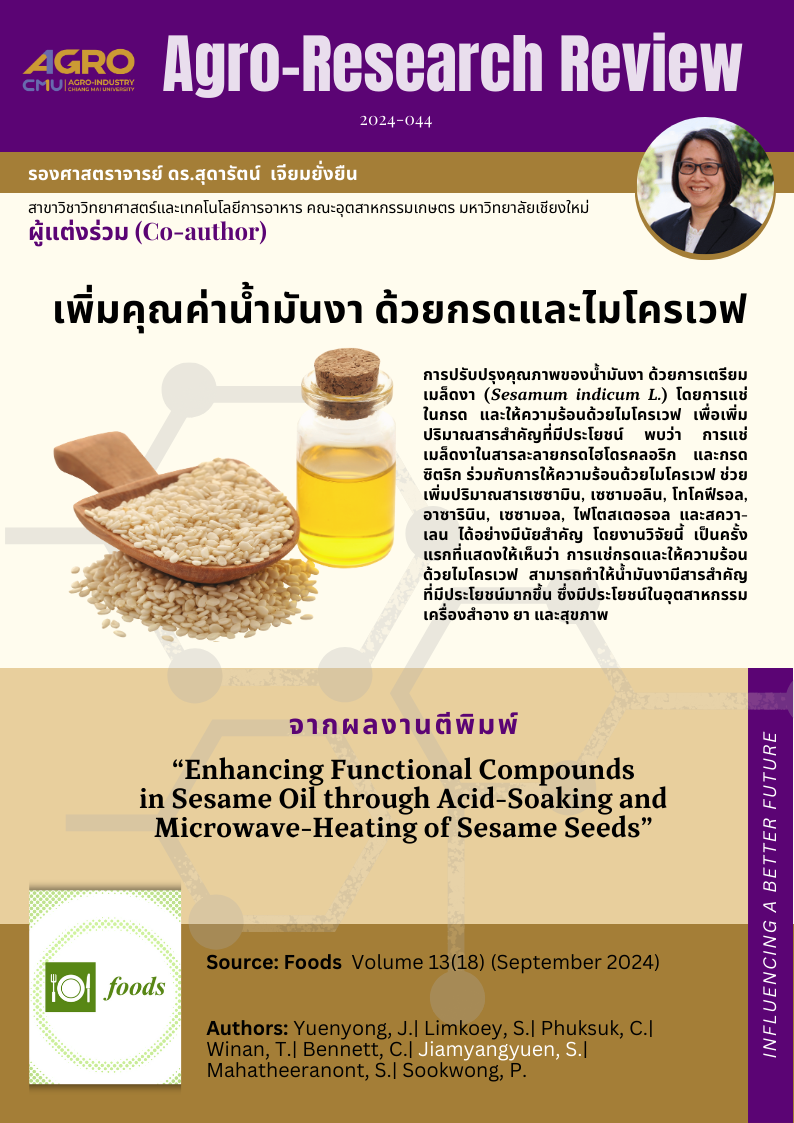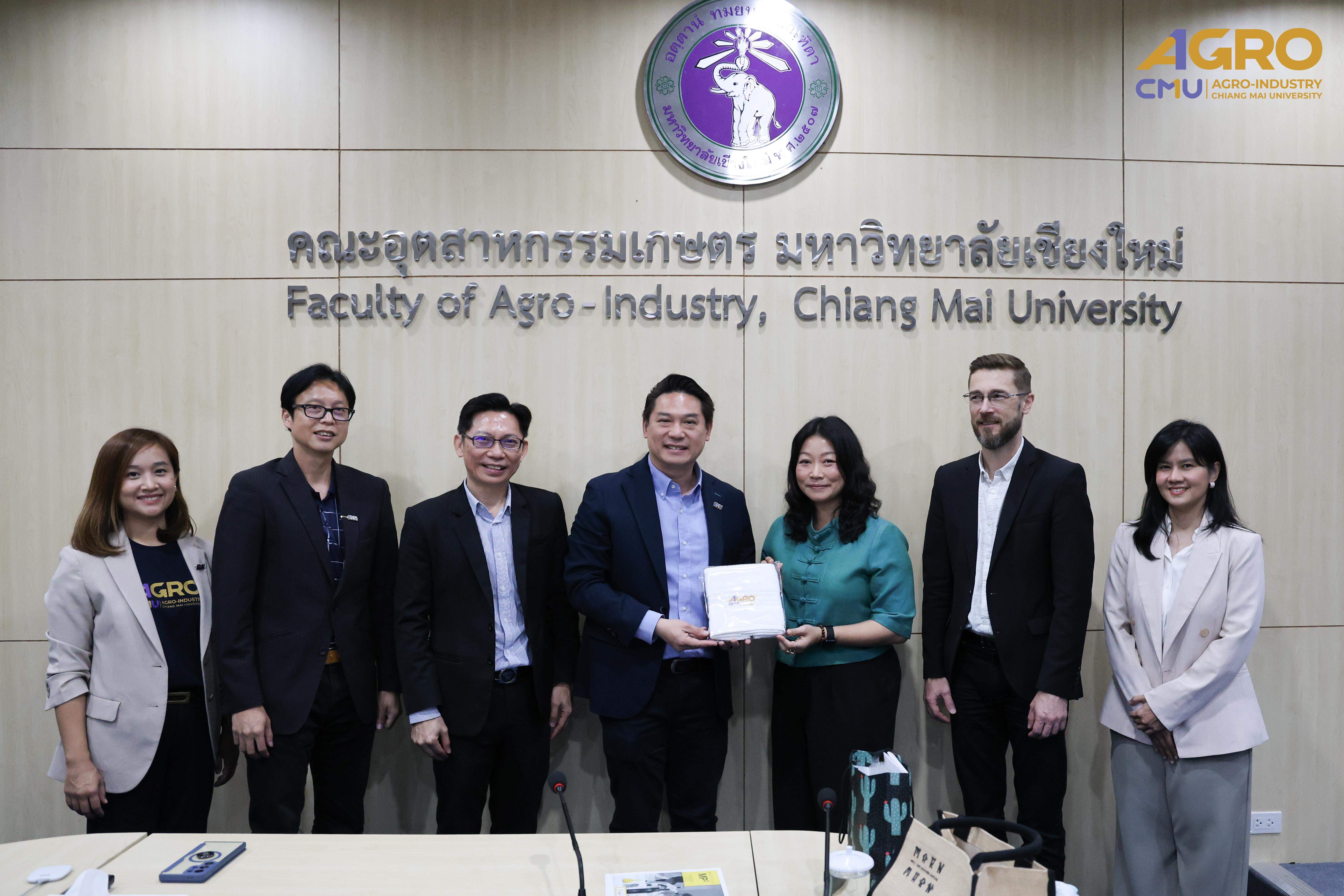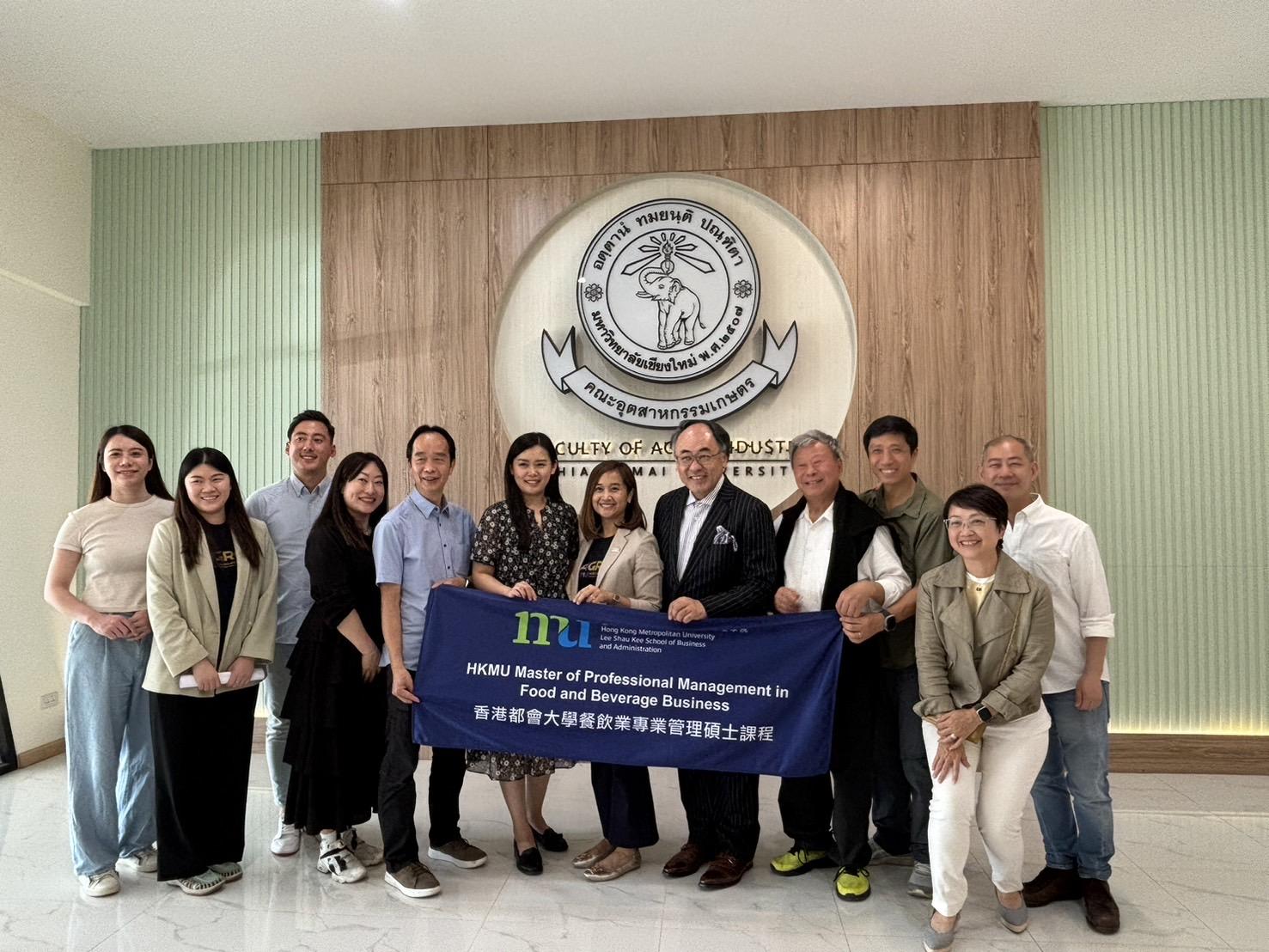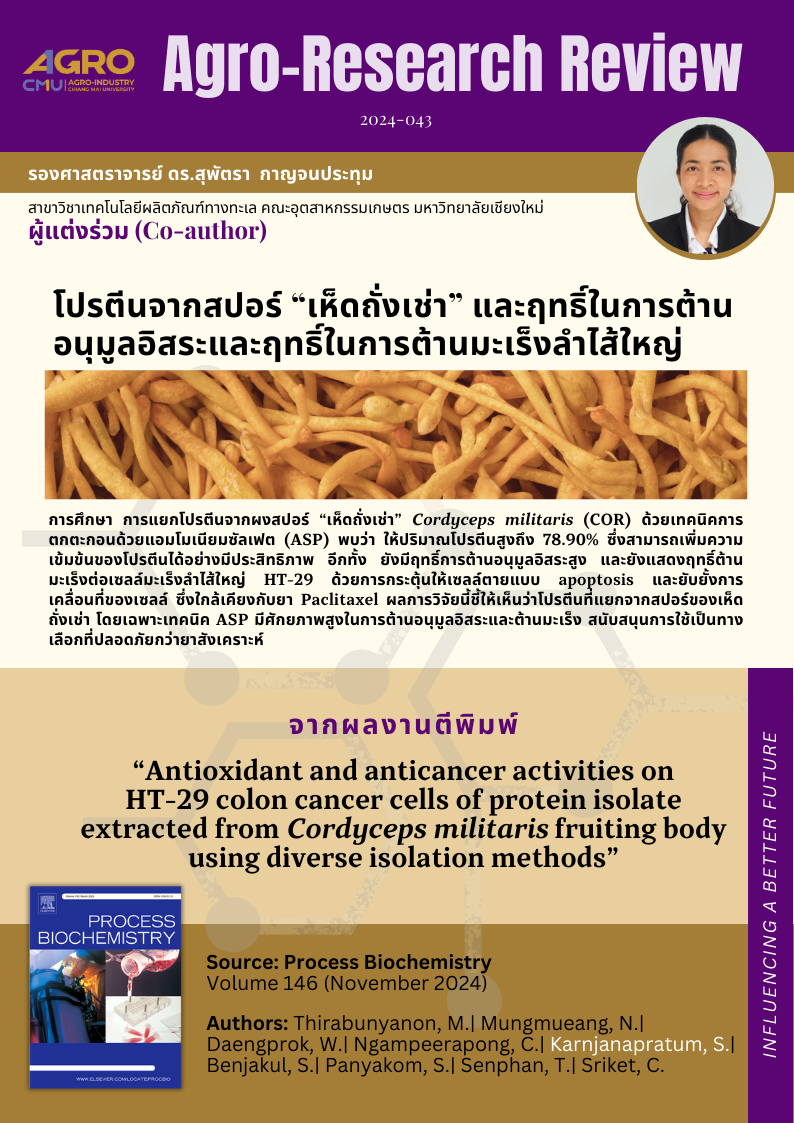
แนะนำงานวิจัย 2024-044: เพิ่มคุณค่าน้ำมันงา ด้วยกรดและไมโครเวฟ
การปรับปรุงคุณภาพของน้ำมันงาด้วยการเตรียมเมล็ดงา (Sesamum indicum L.) โดยการแช่ในกรดและให้ความร้อนด้วยไมโครเวฟ เพื่อเพิ่มปริมาณสารสำคัญที่มีประโยชน์ พบว่า การแช่เมล็ดงาในสารละลายกรดไฮโดรคลอริกและกรดซิตริก ร่วมกับการให้ความร้อนด้วยไมโครเวฟ ช่วยเพิ่มปริมาณสารเซซามิน, เซซามอลิน, โทโคฟีรอล, อาซารินิน, เซซามอล, ไฟโตสเตอรอล และสควาเลน ได้อย่างมีนัยสำคัญ โดยงานวิจัยนี้เป็นครั้งแรกที่แสดงให้เห็นว่าการแช่กรดและให้ความร้อนด้วยไมโครเวฟสามารถทำให้น้ำมันงามีสารสำคัญที่มีประโยชน์มากขึ้น ซึ่งมีประโยชน์ในอุตสาหกรรมเครื่องสำอาง ยา และสุขภาพ
Improving the quality of sesame oil by preparing sesame seeds (Sesamum indicum L.) through acid soaking and microwave heating to increase beneficial bioactive compound content. It was found that soaking sesame seeds in hydrochloric acid and citric acid solutions, combined with microwave heating, significantly increased the content of sesamin, sesamolin, tocopherol, asarinin, sesamol, phytosterol, and squalene. This research is the first to demonstrate that acid soaking and microwave heating can enhance the beneficial bioactive compound content in sesame oil, which have applications in the cosmetic, pharmaceutical, and health industries.
Topic: Enhancing Functional Compounds in Sesame Oil through Acid-Soaking and Microwave-Heating of Sesame Seeds
Authors: Yuenyong, J.| Limkoey, S.| Phuksuk, C.| Winan, T.| Bennett, C.| Jiamyangyuen, S.| Mahatheeranont, S.| Sookwong, P.
Abstract:
This study investigated whether pre-treating sesame (Sesamum indicum L.) seeds with a combination of acid-soaking and microwave-heating could significantly enhance the quality of the resulting sesame oil, particularly by increasing its content of functional compounds such as lignans, tocopherol, phytosterol, and squalene. The study revealed that soaking the sesame seeds in a solution of HCl and citric acid, along with microwave-heating, significantly increased the content of these compounds. The detected ranges were sesamin (1365–6927 µg g−1), sesamolin (605–3493 µg g−1), tocopherol (69.31–282.76 µg g−1), asarinin (ND–383.52 µg g−1), sesamol (ND–49.59 µg g−1), phytosterol (3690–6201 µg g−1), and squalene (532−1628 µg g−1). Additionally, the study found that the pre-treatment of sesame seeds had a minimal effect on the fatty acid composition, antioxidant activity (92.94–95.08% DPPH scavenging activity), and oxidative stability (2.13–2.90 mg MDA kg−1 oil). This is the first study to demonstrate that using acid-soaking and microwave-heating to prepare sesame seeds can produce sesame oil enriched with functional compounds, potentially benefiting cosmetic, pharmaceutical, and health applications.
Keywords: acid-soaking; antioxidant activity; microwave-heating; oxidative stability; phytochemicals; pre-treatment; sesame; sesamin; sesamolin; tocopherol
View at publisher: https://www.mdpi.com/2304-8158/13/18/2891
#เทคโนโลยีชีวภาพ #เทคโนโลยีการบรรจุ #เทคโนโลยีผลิตภัณฑ์ทางทะเล #เทคโนโลยีการพัฒนาผลิตภัณฑ์ #วิทยาศาสตร์และเทคโนโลยีการอาหาร #อุตสาหกรรมเกษตร #มหาวิทยาลัยเชียงใหม่ #agrocmu #CMU



